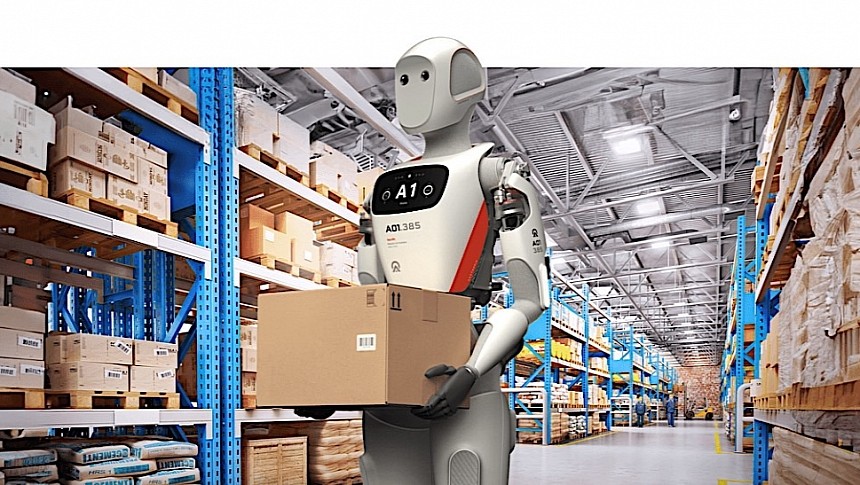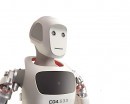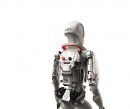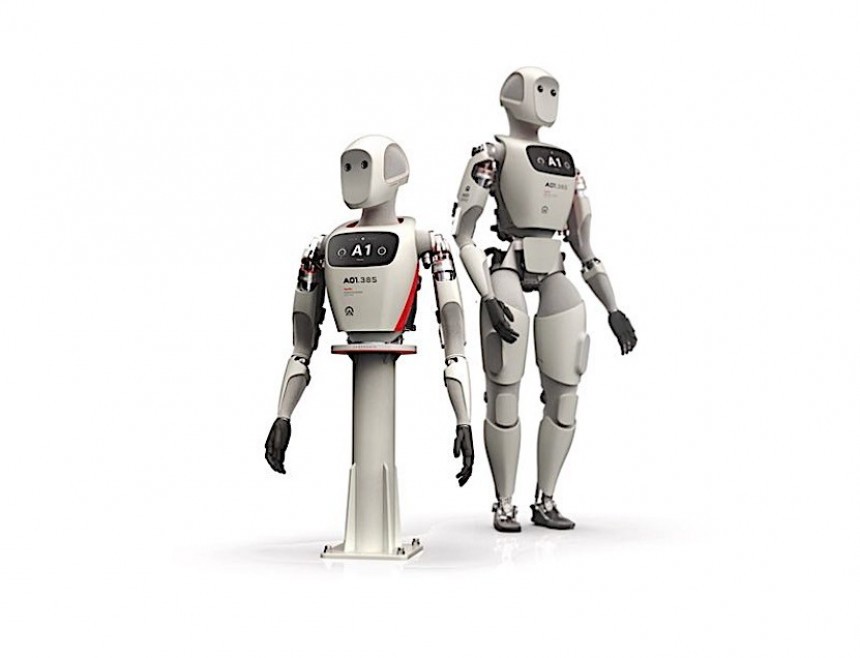Earlier this week an event that has all the makings of a watershed moment in human history went by almost unnoticed: the launch of the "world's most capable humanoid robot." Whether that bold claim is true or not remains to be seen, but we reckon having a closer look at what this thing called Apollo is all about might clear things up a bit.
Apollo is the name of the new and fancy humanoid robot, and the company making it is called Apptronik. This crew, established in 2016, describes itself as "the leader in next-generation general purpose robots" but despite its very specific and high-profile mission, it mostly worked under the radar until now.
If you remember the NASA humanoid robot called Valkyrie we talked about not long ago then you should know Apptronik had a hand in making it. That one is meant for use in remote areas such as work on offshore rigs, and it's about to be deployed for testing on the facilities operated by Australian oil and gas production company Woodside Energy.
The Apollo on the other hand is designed to be used closer to home, in warehouses. That seems a bit of a waste of the world's most capable humanoid robot, but when you really think about it you realize these areas of human activity are the most in need of such technologies.
Generally speaking, industrial robots but also the ones used in warehouses are clearly shaped like machines. Apollo on the other hand is a bipedal artificial creature with arms, legs, and a face not unlike the ones we've seen taking over the world so many times in sci-fi movies.
If you look at it sideways, it kind of looks like the robots bent on taking over the world in Will Smith's I, Robot, minus the red lights shining in their chest as a clear warning of danger.
The Apollo is about as tall as an average human being, at five feet eight inches (173 cm), and weighs 160 pounds (73 kg). All the main body parts are in all the right places, and should allow the machine to lift stuff weighing as much as 55 pounds (25 kg), which is a bit more than what your average human can comfortably handle.
We all know the industrial robots I mentioned earlier are all cold and impersonal, so the Apollo was designed to be quite the opposite. Its seemingly featureless face is dotted solely by two perfectly round eyes that can't show any manifestation of emotion, so you'll probably never be able to read anger or discontent on the robot's face.
Quite the opposite, actually, as this kind of design makes it look particularly friendly. Helping with that are the LEDs installed in the head and chest that only come on when they have something important to show, such as battery level, or some message that needs to be displayed.
The human interaction with the robot should also be a lot more intimate than what one experiences when operating an industrial robotic arm. Digital panels installed in its chest allow for communication with the machine, "approximating a congenial face-to-face exchange with a favorite co-worker" as Apptronik puts it.
The thing is powered by a battery pack that in itself doesn't allow for much room for the robot to take over the world: it can only supply power for about four hours. Luckily, the battery is swappable, meaning if more of them are on deck and someone is there to swap them, the robot's autonomy should virtually be endless.
Another interesting thing about the Apollo is that it's modular. The bipedal shape we discussed in the lines above is only one of the possible configurations. The company behind it designed Apollo to be shipped to where it's needed as a humanoid robot, or a torso mounted on a wheeled platform, or as a torso mounted on a stationary stand.
When operating as a humanoid robot, the Apollo uses sensors and cameras to make sure it stops if an obstacle gets in its path. In this form it can be used for most warehouse-specific operations, including the unloading of trailers, the picking and moving of cases, or palletization.
Although it spilled most of the beans on the Apollo robot, Apptronik does not say when we should expect the machine to become a constant presence in a warehouse near us. The price of the robot is also not known.
For what it's worth the crew behind this tech describes it as "one of the most advanced tools humanity has ever created" and even goes as far as declaring Apollo to be the iPhone of robots.
The bold comparison is probably owed not only to its capabilities and design but also to the fact that mass production of the robot should be a breeze. Or so we're told...
If you remember the NASA humanoid robot called Valkyrie we talked about not long ago then you should know Apptronik had a hand in making it. That one is meant for use in remote areas such as work on offshore rigs, and it's about to be deployed for testing on the facilities operated by Australian oil and gas production company Woodside Energy.
The Apollo on the other hand is designed to be used closer to home, in warehouses. That seems a bit of a waste of the world's most capable humanoid robot, but when you really think about it you realize these areas of human activity are the most in need of such technologies.
Generally speaking, industrial robots but also the ones used in warehouses are clearly shaped like machines. Apollo on the other hand is a bipedal artificial creature with arms, legs, and a face not unlike the ones we've seen taking over the world so many times in sci-fi movies.
If you look at it sideways, it kind of looks like the robots bent on taking over the world in Will Smith's I, Robot, minus the red lights shining in their chest as a clear warning of danger.
We all know the industrial robots I mentioned earlier are all cold and impersonal, so the Apollo was designed to be quite the opposite. Its seemingly featureless face is dotted solely by two perfectly round eyes that can't show any manifestation of emotion, so you'll probably never be able to read anger or discontent on the robot's face.
Quite the opposite, actually, as this kind of design makes it look particularly friendly. Helping with that are the LEDs installed in the head and chest that only come on when they have something important to show, such as battery level, or some message that needs to be displayed.
The human interaction with the robot should also be a lot more intimate than what one experiences when operating an industrial robotic arm. Digital panels installed in its chest allow for communication with the machine, "approximating a congenial face-to-face exchange with a favorite co-worker" as Apptronik puts it.
The thing is powered by a battery pack that in itself doesn't allow for much room for the robot to take over the world: it can only supply power for about four hours. Luckily, the battery is swappable, meaning if more of them are on deck and someone is there to swap them, the robot's autonomy should virtually be endless.
When operating as a humanoid robot, the Apollo uses sensors and cameras to make sure it stops if an obstacle gets in its path. In this form it can be used for most warehouse-specific operations, including the unloading of trailers, the picking and moving of cases, or palletization.
Although it spilled most of the beans on the Apollo robot, Apptronik does not say when we should expect the machine to become a constant presence in a warehouse near us. The price of the robot is also not known.
For what it's worth the crew behind this tech describes it as "one of the most advanced tools humanity has ever created" and even goes as far as declaring Apollo to be the iPhone of robots.
The bold comparison is probably owed not only to its capabilities and design but also to the fact that mass production of the robot should be a breeze. Or so we're told...











